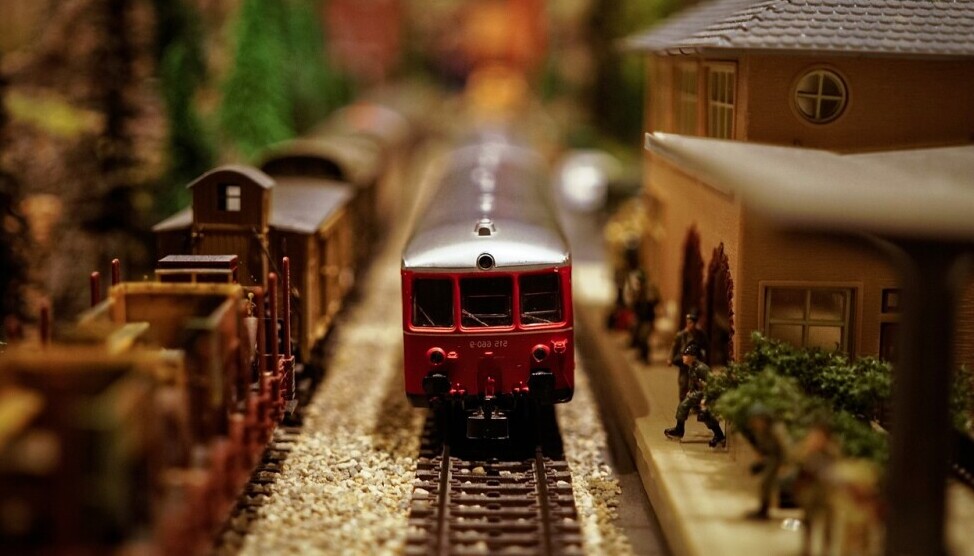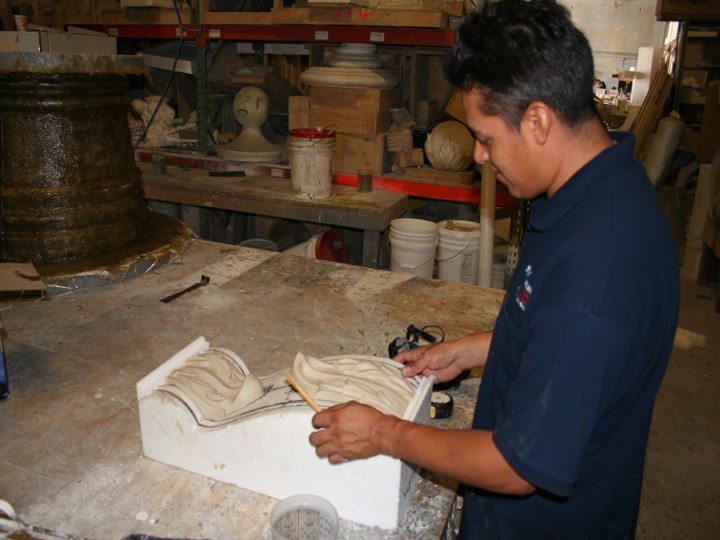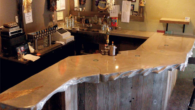Theme Parks And Model Railroads: How Silicone Molds Help Bring Them To Life
Theme Parks and Model Railroads: How Silicone Molds Help Bring Them to Life.
The results of using silicone molds can be seen all over theme parks, from whimsical sculptures to highly detailed ride facades. Parks use them because they make it possible to create repeatable, durable, and safe components that bring large-scale creative visions to life. The process behind making and using these molds shapes much of what guests see, touch, and interact with, and the budgets for this type of work are often enormous. Whether it’s the surface of a faux rock wall or the flexible skin of an animatronic dinosaur, silicone rubber has likely played a part in producing the final product.

You may not be on a journey to build a full-size theme park, but the same principles apply to model making for railway or race car layouts, or even a model village. Just on a much smaller scale.
The Role of Silicone Molds in Theme Park Design
The widespread use of silicone molds has transformed how theme parks plan and construct their decorative elements, props, and interactive scenery. While traditional sculpting still has its place, it’s time-consuming, hard to replicate with consistency, and creates unnecessary repeat costs. Today, artists often use a combination of hand-sculpting, 3D printing, and editable digital files to create the original master.
Silicone molds allow large numbers of identical parts to be made while preserving the fine detail of the original. The flexibility and strength of silicone make it ideal for projects where accuracy and durability are key. Many architectural or themed elements, such as stonework, ornate trims, and animatronic skins, begin as carefully crafted original models. Once finalized, a silicone mold captures the exact surface texture and form, enabling multiple, perfectly matched replicas.
Before silicone, which only became widespread in the late 1980s, mold-makers relied on rigid materials or latex. Latex, in use since the early 20th century, struggled with complex shapes, deep undercuts, and long-term durability. Silicone, in contrast, can be removed cleanly from intricate surfaces without tearing or sticking, which makes it ideal for delicate and detailed work.
How Silicone Molds Work in Themed Environments.
Creating a silicone mold begins with a model, or “master,” sculpted by hand or produced using 3D tools. The mold-making process captures this design in exact detail, and the mold can then be used to cast a variety of materials such as resin, plasters, fiberglass, polyurethane foam, or concrete. Here’s how the process usually works:
- Preparing the Master: After the original model is approved, it’s cleaned and sealed with wax or a barrier coat to prevent sticking.
2. Applying Silicone: Liquid silicone can be poured, but for larger molds it’s usually brushed or sprayed on. Multiple coats are often applied for strength, based on the manufacturer’s recommended thickness.
3. Creating the Backing: A rigid shell or “mother mold” is made to support the silicone during storage and casting. This helps ensure it holds its shape and lasts longer.
Demolding: Once the silicone is cured, it’s peeled away cleanly. The original master is preserved and safely stored.
Casting: The finished mold is then filled with resin, foam, or other materials, depending on the part’s final use or location.
This method gives the designer full control over the shape and finish, while making it possible to produce hundreds of identical parts efficiently.
Common Uses of Silicone Molds in Theme Parks
I see the results of silicone molding everywhere in parks, and I always find it fascinating. I often look for pour marks or faint seams to learn more about how something was made. Here are some of the most common areas where silicone molds are used:
Faux Rock and Stonework: Cliff faces, boulders, and artificial walls often come from molds that capture natural stone textures.
Themed Facades: Decorative trims, medallions, banners, and other intricate details are replicated with stunning accuracy.
Statues and Character Figures: Iconic characters and repeated figures are cast from molds to maintain a consistent look.
Interactive Props: Items like levers, buttons, and puzzle pieces are often cast in soft, durable materials for guest interaction.
Ride Vehicles and Sets: Molded details on ride vehicles or show sets must be both attractive and able to withstand heavy use.
Because silicone captures surface detail so precisely, it preserves even the smallest features. As long as the original master is saved, a new mold can always be made using the existing mother mold.
Why I Would Choose Silicone Molds for Themed Projects
There are several reasons why I prefer silicone molds on themed builds:
Consistency: Every casting is a match, even if produced months or years apart.
Speed: Once the mold is made, producing parts is much faster than sculpting or printing from scratch.
Durability: A good silicone mold can last through many casting cycles.
Versatility: Silicone can be used with many materials, including foams, resins, and heavier plasters or concrete.
For themed environments that require repeatable details and seamless replacements, silicone is hard to beat.
Things to Consider Before Starting:
Even though silicone is often the best option, there are a few things to think about:
Safety Note:
While silicone molding is generally safe, it’s important to follow basic safety precautions. Always wear gloves when handling uncured silicone, and work in a well-ventilated area. Use a suitable mask when working with resins, foams, or solvent-based materials, as many casting compounds release fumes or heat during curing. Proper ventilation and protective equipment are essential. Be sure to read the manufacturer’s Safety Data Sheets (SDS) before using any new material.
Cost: Quality silicone isn’t cheap, especially for larger molds.
Design Complexity: Complex shapes may need sectional or multi-part molds, which require more time and experience.
Material Compatibility: Always test your casting material with your silicone to ensure curing and avoid damage. Plaster and concrete can dry the surface of a mold and reduce its lifespan.
Storage Space: Molds take up space and need proper storage to prevent warping.
Lifespan: Silicone lasts longer than most mold materials, but still wears down over time.
Good planning will help protect your mold investment for the long term.
Durability and Maintenance
Silicone molds are tough and built for repeated use, but they still require proper care to maintain their quality over time. Prolonged exposure to UV light, high heat, or poor storage conditions can cause them to lose flexibility or fine surface detail.
To extend their lifespan:
Clean the mold thoroughly after each use, removing any residue from casting materials.
Condition the surface periodically with a silicone-safe mold release or conditioning spray to keep it supple.
Store molds flat or upright in a cool, dry place — away from direct sunlight or extreme temperatures.
If the cast parts produced from these molds are used outdoors or in high-traffic areas, they may eventually wear, fade, or crack. Keeping the original master and a backup mold allows for fast replacements and consistent quality, without the need to recreate the original from scratch.
How Silicone Molds Shape the Magic Behind the Scenes.
Silicone molds play a vital role in nearly every corner of modern theme park design, from storybook castles to sci-fi worlds and lifelike animatronics. Guests don’t see the molds or the process behind them, but they absolutely experience the results.
These molds let teams bring big creative ideas to life, faster and more reliably. Knowing how to make and use molds is a major advantage for any fabricator or designer.
Next time you’re walking through a theme park, take a closer look at the scenery around you. That rock wall or themed prop might just be the product of a silicone mold doing its quiet, clever work behind the scenes. After all, casting in one form or another goes back nearly 6,000 years — and it’s still evolving today.




This was such a fascinating read!
I never would’ve connected silicone molds with the intricate details in theme parks and model railroads until now. My nephew is into athletic training, but he’s also recently gotten into model building as a way to relax—and now I see how valuable molds like these can be for creating realistic landscapes and structures. I’m definitely going to share this with him.
I especially appreciated the part about how silicone molds make it easier to replicate fine details consistently—such a smart and efficient way to maintain quality across larger projects.
Do you find that certain types of silicone molds work better for outdoor displays that are exposed to the weather? And for beginners just getting into model scenery, what’s a good starter project that uses these kinds of molds?
Thanks for sharing such a unique behind-the-scenes look into this creative world!
Hi Alice,
Silicone is just a great product, some are just softer or harder than each other, and more suitable for diffent types of projects. As it’s not the actual silicone that remains outside in most instances that I am aware of.
Rob
Okay, this was like stepping into the secret lab of theme park magic! I’ll never look at a rock wall or ride prop the same way again—now I’ll be scanning for seams and whispering, “Bet that was silicone…”
I love how you broke down the whole mold-making process without making it feel overly technical. It’s amazing that the same materials used to build dragons and castles at scale can also bring charm to a tiny model train village. Big dreams, small molds—same magic!
Thanks for this behind-the-scenes adventure. Who knew silicone could be such a creative sidekick?
Hi JarieLyn,
Please forgive my slow response, I have just been through a small medical emergency. And yes, this sort of knowledge can make you look at things totally differently. It happened to me in the big molding world, too. Looking at columns of government buildings etc So my experiences are based on my personal endeavours.
Rob